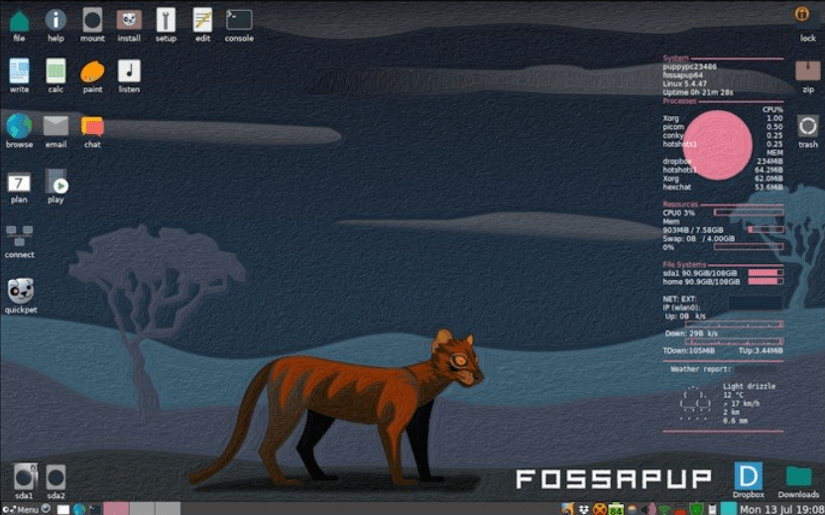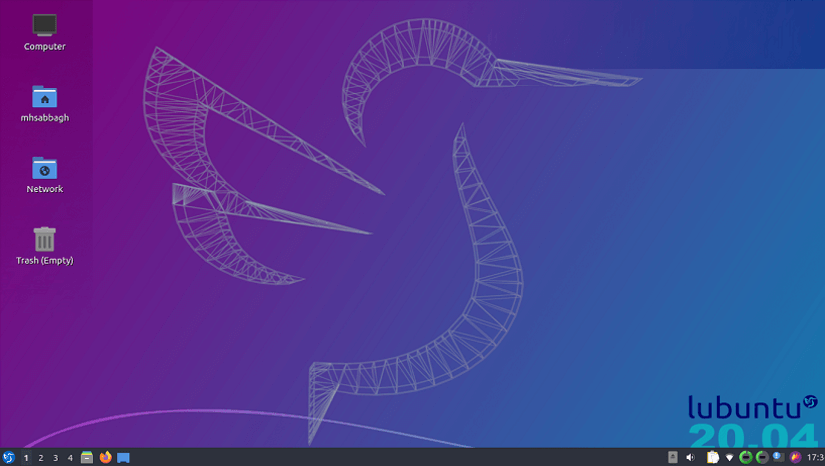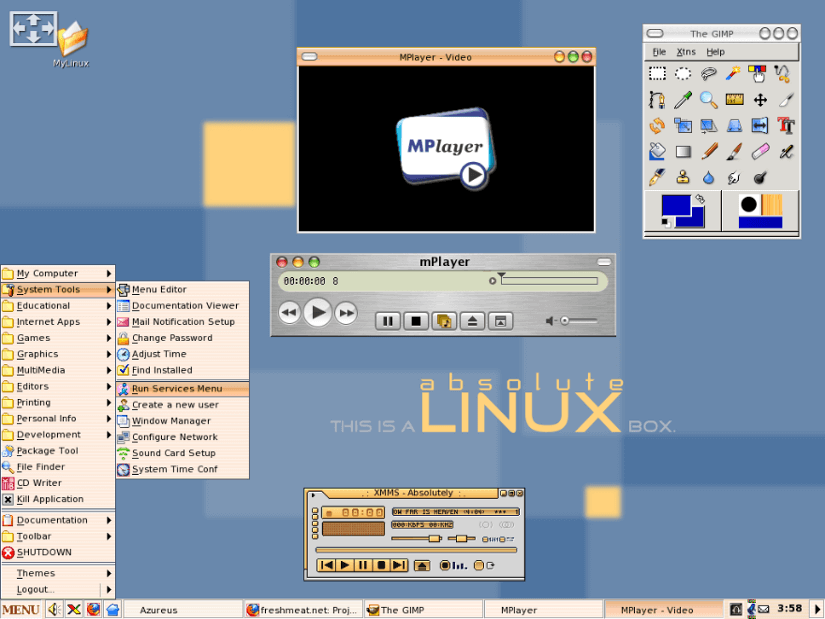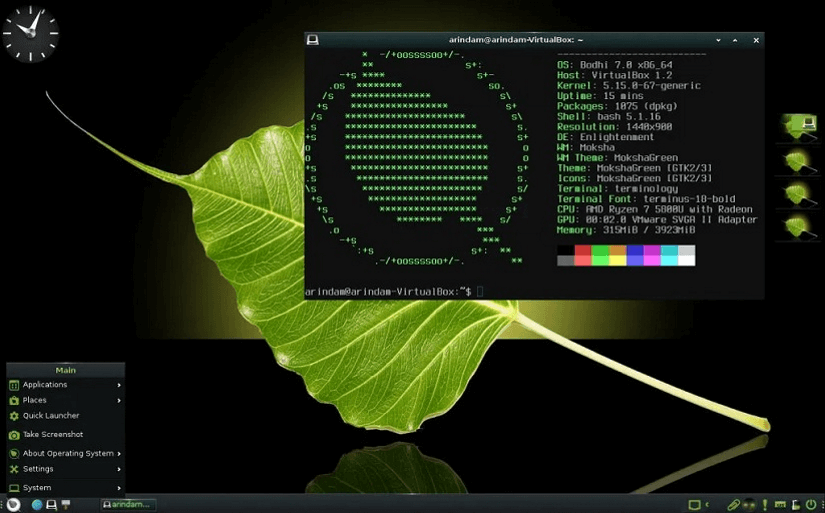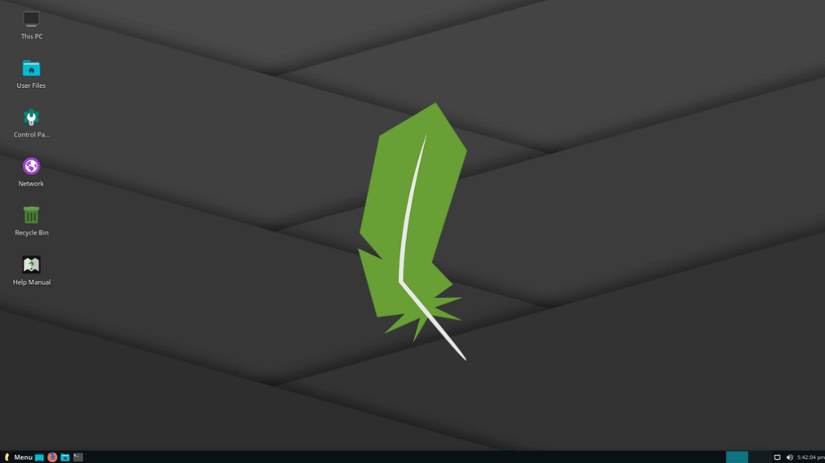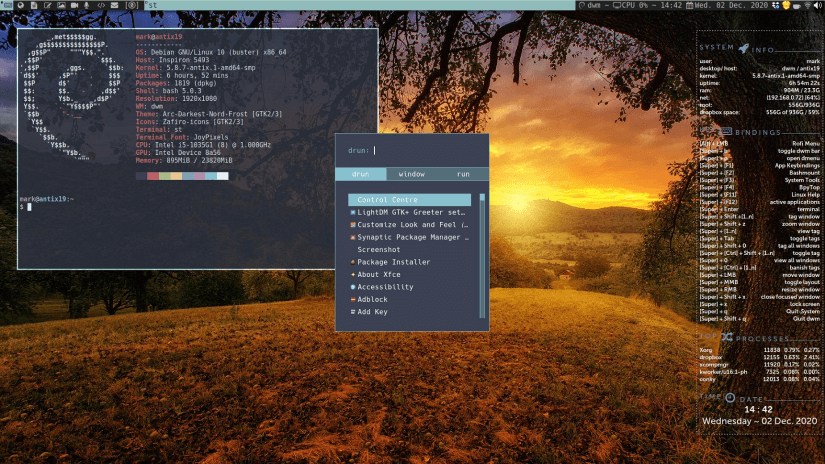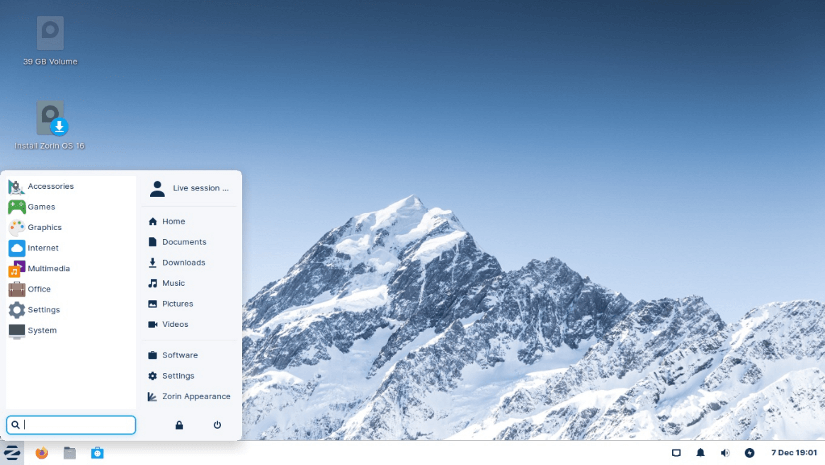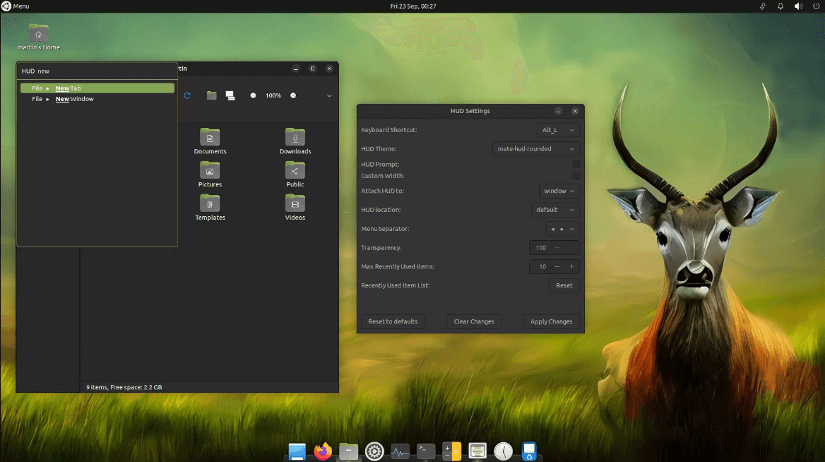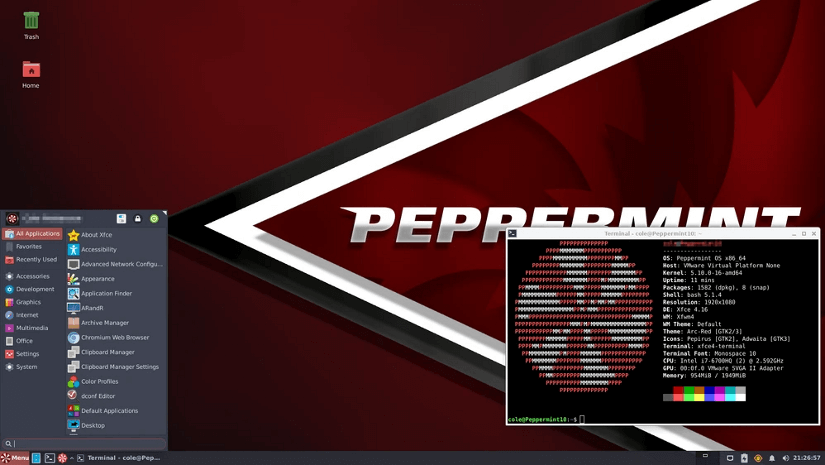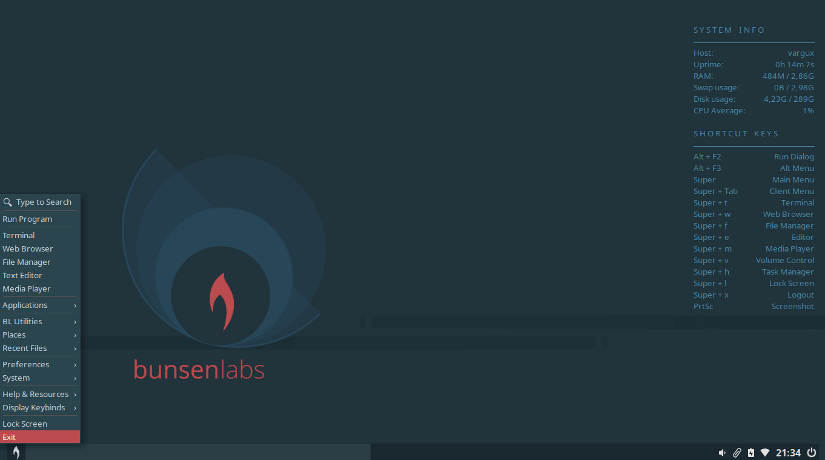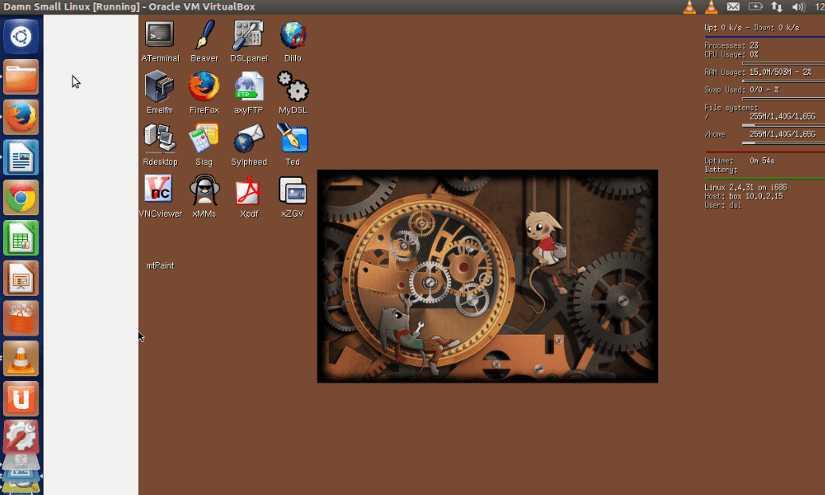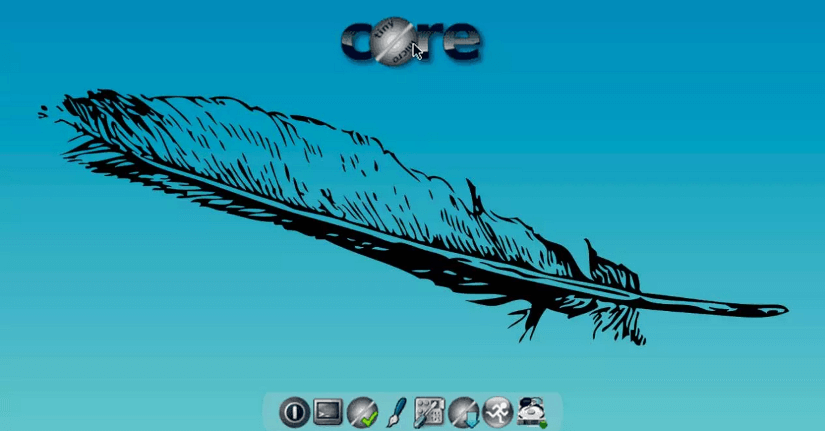FUNDAMENTALS A Complete Guide for Beginners

A Lightweight Linux distribution can present you with a perfect combo of maximized performance on low system resources. As lightweight Linux distros are designed to be fast and efficient with a powerful computing experience for users even on low-end hardware. In this article, I will discuss some best lightweight Linux distros. For that, I will specify the system requirements they need to run along with their pros & cons. Moreover, will present a comparative analysis table among them so that you can get a comparable overview of them.
Benefits of Using Lightweight Linux Distros
Using lightweight Linux distros can offer several benefits, particularly for users with older or less powerful hardware. Here are some of the key benefits:
- Performance: Lightweight Linux Distributions are designed to run efficiently on systems with limited resources. As they consume fewer CPU & memory resources that results in faster performance & responsiveness.
- Resource Efficiency: Come with pre-installed software and services, allowing you to allocate system resources more efficiently.
- Extended Hardware Support: They can make old machines or less common hardware usable again.
- Less Bloatware and Crapware: As lightweight distros come with less unnecessary software, they tend to gift users with less bloatware and crapware experience.
- Energy Efficiency: Optimized resource usage helps lightweight distros use less power than resource-intensive operating systems.
- Simplicity: They avoid complexity & enhance users’ experience with simple designs.
Factors to Consider While Choosing a Lightweight Linux Distro
Choosing a lightweight Linux distro involves considering various factors to ensure that the distro aligns with your specific needs and preferences. Some of these key factors are:
- Resource Requirements: Check the minimum system requirements of the distributions & if they meet your hardware specifications.
- Desktop Environment: Lightweight distros often come with minimal or lightweight desktop environments such as LXDE, LXQt, Xfce, or Openbox.
- Software Repository: Check the available software repository so that you can get your required software.
- Ease of Use: Consider the level of user-friendliness and ease of use the distro is providing. Check if it matches your level of expertise & desired user experience.
- Stability & Release Cycle: Determine the stability & release cycle of the distribution. As some distros are more stable with updated software than others.
- Community & Support: A larger community can provide assistance & resources, enhancing your overall experience with the distro.
Top 12 Lightweight Linux Distros
In the following section, I will discuss the twelve best lightweight Linux distros that consume fewer system resources, provide you with the fastest OS experience, and are good for both your newer & old hardware. I have attached their official download page link for easy access.
Moreover, I will discuss system requirements, along with reasons why you should choose or avoid each of the distros so that you can get a clear idea about them.
1. Puppy Linux
Puppy Linux is a lightweight & fast distro that is ideal for users with low-specification hardware or who prefer a simple and streamlined user experience. Its exact installation method, user friendly interface, and customization options make it a popular choice for many users and organizations.
Download Puppy Linux
Click here to visit Puppy Linux‘s official download page.
System Requirements for Installing Puppy Linux
- CPU Type: x86, x86_64, AMD64.
- 32-bit Puppy’s CPU: Single-core Pentium 4 or equivalent, RAM:
- 64-bit Puppy’s CPU: 64-bit dual core, RAM: 1 GB.
Reasons to Choose Puppy Linux
- Extremely lightweight & fast.
- Ideal for old hardware.
- Easy to use & can run from RAM.
Reasons to Avoid Puppy Linux
- Limited software selection.
- May require additional configuration for certain hardware.
- Not suitable for more complex tasks.
2. Lubuntu
One of the key features of Ubuntu’s flavor, Lubuntu, is its lightweight design, which makes it ideal for old or low-specification hardware. It requires minimal system resources and can run smoothly on computers with as little as 512 MB of RAM. Moreover, it includes a range of pre-installed software applications & uses minimal power.
Download Lubuntu
Click here to visit Lubuntu‘s official download page.
System Requirements for Installing Lubuntu
- Processor: x86 with a clock speed of at least 1GHz.
- RAM: 512 MB (1GB is recommended).
- Storage: 5GB of free hard disk space.
Reasons to Choose Lubuntu
- Lightweight, easy to use, & fast.
- Familiar interface for Windows users.
- Optimized for low-end hardware.
Reasons to Avoid Lubuntu
- Not as customizable as other distros.
- Limited software selection.
3. Absolute Linux
Absolute Linux is based on the Slackware Linux project. It is lightweight & systemd-free, which makes it a fast and efficient distro. It uses the lightweight IceWM window manager by default. Moreover, it uses the traditional package management system of Slackware, relying on the .tgz package format. The distro provides a user friendly, stable & reliable OS experience for its users.
Download Absolute Linux
Click here to visit Absolute Linux’s official download page.
System Requirements for Installing Absolute Linux
- CPU: Intel/AMD 64bit.
- RAM: 64MB (recommended 1GB).
- Storage: 5GB (minimum).
Reasons to Choose Absolute Linux
- Lightweight & fast, both on newer & old hardware.
- Stable & reliable.
- An active community of users & developers.
Reasons to Avoid Absolute Linux
- Not as user friendly as some other Linux distros.
- Smaller community & support.
- Absolute Linux, like some other Slackware-based distro, follows a more traditional Unix-like approach, which may find beginners more challenging.
4. Bodhi Linux
If you need a lightweight Linux distro that is fast as well as perfect for an old laptop, Bodhi Linux is an exact match. As it is specially designed to run on hardware with limited capabilities.
Download Bodhi Linux
Click here to visit Bodhi Linux‘s official download page.
System Requirements for Installing Bodhi Linux
- Processor: 32bit, 500MHz (Minimum), and 64bit, 1.0GHz (Recommended).
- RAM: 512MB (Minimum & might run slowly), and 768MB (Recommended).
- Storage: 5 GB (Minimum), and10GB of free hard disk space (Recommended).
Reasons to Choose Bodhi Linux
- Lightweight, optimized for low-end hardware.
- Beautiful & modern desktop environment.
Reasons to Avoid Bodhi Linux
- Not as popular as other distros.
- Limited software availability.
5. Linux Lite
Linux Lite is a lightweight Linux distribution based on Ubuntu LTS, designed to be user friendly and efficient for old hardware. It comes with a lightweight Xfce desktop environment.
Download Linux Lite
Click here to visit Linux Lite’s official download page.
System Requirements for Installing Linux Lite
- Processor: 1 GHz CPU.
- RAM: 768MB (recommended 1 GB).
- Storage: 8 GB of free hard disk space (minimum).
Reasons to Choose Linux Lite
- Super lightweight & fast.
- Ideal for old hardware.
- Friendly desktop.
Reasons to Avoid Linux Lite
- Not a fancy-looking or visually appealing desktop.
- Legacy menu-driven desktop.
6. antiX
The lightweight Debian-based antiX Linux distro comes with the IceWM manager, which offers a lot of customization options. It also updates frequently to keep users up-to-date. Moreover, the antiX control panel lets users customize varieties of antiX features.
Download antiX
Click here to visit antiX’s official download page.
System Requirements for Installing antiX
- CPU: Intel-AMD x86 processor.
- RAM: 256MB (minimum).
- Storage: 5GB (minimum).
Reasons to Choose antiX
- antiX is entirely systemd-free & uses sysVinit as a runit system, which makes the distro fast.
- Available for the 32-bit installer too with four variants, for example, Full, Base, Core, and Net.
- Provides many mainstream and lightweight applications.
Reasons to Avoid antiX
- Lacks an intuitive user interface.
- Less user friendly for beginners.
- Limited hardware support.
7. Zorin OS LITE
Zorin OS is an easy, lightweight Ubuntu-based Linux Distribution with a Windows-like user interface. One of the lightest versions of Zorin OS is Zorin OS Lite, which is perfect for low specifications hardware hence it runs smoothly on old laptops. It’s not only just lite but also good-looking.
Download Zorin OS Lite
Click here to visit Zorin OS Lite’s official download page.
System Requirements for Installing Zorin OS Lite
- Processor: 64-bit 1 GHz single core-Intel/AMD.
- RAM: 1GB.
- Storage: 10 GB of free hard disk space.
- Display: 800×600 resolution.
Reasons to Choose Zorin OS Lite
- It’s a free open-source Linux distro.
- It uses the Xfce desktop environment, which is lightweight & highly customizable.
- It’s stable & runs smoothly with a stunning look.
Reasons to Avoid Zorin OS Lite
- Preinstalled Uncomplicated Firewall (UFW) not activated by default.
- Limited desktop styles in the free version.
8. Ubuntu MATE
Ubuntu MATE is a free, open-source Linux distribution that is based on Ubuntu and uses the MATE as the desktop environment. Due to its lightweight nature, It is designed to run smoothly on old or low-specification hardware, making it a great choice for old laptops.
Download Ubuntu MATE
Click here to visit Ubuntu MATE’s official download page.
System Requirements for Installing Ubuntu MATE
- Processor: Core 2 Duo (Recommended Corei3).
- RAM: 1GB (Recommended 4GB).
- Storage: 8 GB (Recommended 16GB).
- Display: 1024×768 (Recommended 1440×900 or higher).
Reasons to Choose Ubuntu MATE
- The simplicity of GNOME with the power of Ubuntu.
- Works great on old laptops.
- Highly configurable & it benefits from Ubuntu’s stability, security & a wide range of software packages.
Reasons to Avoid Ubuntu MATE
- Outdated user interface.
- Some users find it redundant as any Ubuntu install can be transformed into a Ubuntu MATE
- Lack of a good software center by default.
9. Peppermint OS
Devian & Devuan-based Peppermint OS aims to provide a fast, user friendly, and cloud-focused operating system. Being a lightweight distro, It works well on old hardware as well as newer computers.
Download Peppermint OS
Click here to visit Peppermint OS‘s official download page.
System Requirements for Installing Peppermint OS
- CPU: Intel x86, x86_64, amd64 processor.
- RAM: 1GB (recommended 4GB).
- Storage: 10GB free disk space (recommended 32GB).
Reasons to Choose Peppermint OS
- It is an open-source operating system.
- It provides a user friendly interface.
- Peppermint OS is a Lightweight distro.
Reasons to Avoid Peppermint OS
- Some users may prefer a more traditional or web-based desktop environment instead of a hybrid desktop environment.
- Not as stable as some other Linux distributions.
10. BunsenLabs
BunsenLabs is a lightweight Debian-Stable-based Linux distro that is the successor of the Crunchbang project. It uses the lightweight & highly customizable Openbox desktop. This distro supports 32-bit as well as 64-bit versions, which makes it perfect for low-end hardware along with modern hardware.
Download BunsenLabs
Click here to visit BunsenLabs’ official download page.
System Requirements for Installing BunsenLabs
- CPU: 1GHz or faster.
- RAM: 1GB (Recommended 2GB).
- Hard disk space: 10GB (recommended 20GB).
Reasons to Choose BunsenLabs
- Lightweight & powerful Linux distro that provides a complete Linux distro using few system resources.
- user friendly & no limitations while customizing.
- Provides preconfigured Openbox window manager.
Reasons to Avoid BunsenLabs
- Minor complex installation process.
- Some people find Openbox less common. Though the Openbox is lightweight, sometimes it may be memory-consuming.
11. DSL
Damn Small Linux or DSL is one of the smallest operating systems. It’s so small that it can entirely run on your RAM, with no need for a hard disk drive. DSL is based on Knoppix and Debian GNU/Linux operating systems and utilizes the Fluxbox window manager.
Download DSL
Click here to visit DSL‘s official download page.
System Requirements for Installing DSL
- CPU: Pentium 200MHz processor or higher.
- RAM: 64 MB (Recommended).
- Hard disk space: 50 MB or more for a full installation.
- CD Drive: 8x CD-ROM drive or USB port for booting from a live CD or USB drive.
Reasons to Choose DSL
- DSL is so lightweight & portable, that it can even be installed on a USB The ISO image of the OS is less than 50 MB in size.
- It comes with a range of pre-installed software applications.
- Additional software can be installed using the MyDSL
Reasons to Avoid DSL
- You can’t expect 100% hardware support.
- Have to connect to the web using Ethernet.
- Outdated UI & limited software support.
12. Tiny Core Linux
As the name indicates, this is also a great lightweight Linux distro. It’s so small that the ISO image is only 21MB. This distro was founded by Robert Shingledecker, earlier who also developed Damn Small Linux (DSL).
Download Tiny Core Linux
Click here to visit Tiny Core Linux’s official download page.
System Requirements for Installing Tiny Core Linux
- RAM: 46MB (Recommended 128MB).
- CPU: Minimum Intel 486DX processor (Recommended Intel Pentium 2).
- Storage: 50MB of free hard disk space (uses 28MB on disk when installed, no apps).
Reasons to Choose Tiny Core Linux
- It promotes an anti-bloatware policy.
- Fast & reliable.
- Best for reviving low-specification hardware by simply booting from an SD card without needing installation.
Reasons to Avoid Tiny Core Linux
- Less program support.
- Many prefer this distro as a hobby rather than using it in daily use.
- No stability to the Wi-Fi manager, as lacks wifi GUI. As a result, only an Ethernet internet connection can be established.
Comparative Analysis of Best Lightweight Linux Distros
To get a comprehensive and comparative overview of the twelve lightweight Linux distributions that have been discussed in this article, kindly go through the following table.
However, note that info on these distros may vary in accordance with different distro flavors and versions. Also, RAM usage and minimum storage may vary depending on the hardware and configuration of the system. To sum up, by selecting a lightweight Linux distribution, you can experience a fast, smooth & quickly responsive OS. Moreover, you can also extend the life of your aging laptop with a stable, secure & efficient lightweight operating system. Throughout this writing, I tried to present some of the best lightweight Linux distros. Hope this article helps you choose the best lightweight distro. There are several lightweight Linux distros that are faster & also perfect for both modern and old hardware specifications. Some lightweight Linux distros are Puppy Linux, antiX, Linux Lite, Tiny Core Linux, Damn Small Linux, Zorin OS Lite, Ubuntu MATE, etc. There are several Linux distros that use less RAM. Some of them use the least amount of RAM than others. Such as Tiny Core Linux, Damn Small Linux, Gentoo, Puppy Linux, Absolute Linux, etc. Some of the fastest Linux distros are Absolute Linux, Arch Linux, Linux Lite, Puppy Linux, Lubuntu, antiX Linux, Xubuntu, MX Linux, etc. They are considered faster due to their lightweight, faster boot & processing time, minimal installation, and Kernel optimization. There are several lightweight Linux distributions available, each designed to use minimal resources and provide a fast and efficient computing experience. For example, Tiny Core Linux, Damn Small Linux, Puppy Linux, LXLE, Lubuntu, etc.
Distributions
Desktop Environment
Storage (Minimum)
RAM (Minimum)
Software Repository
Puppy Linux
JWM, Openbox
512MB
512MB
PET & SFS packages
Lubuntu
LXQt or LXDE
5GB
512MB
Ubuntu
Absolute Linux
IceWM, Fluxbox
5GB
64MB
Slackware
Bodhi Linux
Moksha
10GB
768MB
Ubuntu
Linux Lite
Xfce
8GB
768MB
Ubuntu
antiX
IceWM, Fluxbox
5GB
256MB
Debian
Zorin OS Lite
Xfce
10GB
1GB
Ubuntu
Ubuntu MATE
MATE
8GB
1GB
Ubuntu
Peppermint OS
Xfce
10GB
1GB
Ubuntu
BunsenLabs
Openbox
10GB
1GB
Debian
DSL
JWM
50MB
64MB
Own package system
Tiny Core Linux
FLWM
50MB
46MB
Tiny Core
Conclusion
People Also Ask
Which is the lightest Linux OS?
Which Linux distro uses less RAM?
Which Linux OS is the fastest?
What is the most lightweight Ubuntu distro?
